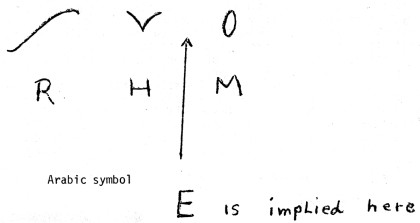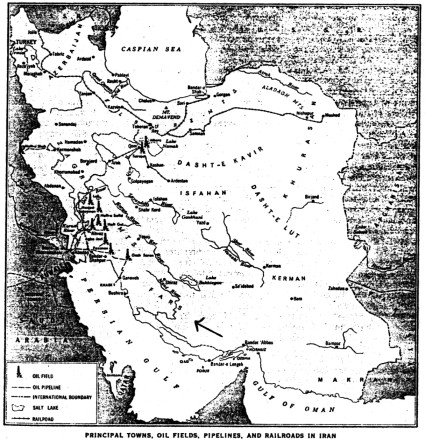Foreign Insulators
by Marilyn Albers
Reprinted from "INSULATORS - Crown Jewels of the Wire", December 1979, page 5
Iran
A trip to the Bakersfield Show October 6 and 7 inspired the
topic for this month's article on Iran, giving you information on a pretty
little glass insulator from that country, that many of you already have in your
collection. Many thanks go to Grant Salzman, of Sacramento, California, who was
at the Show, for supplying information on this one. He in turn gives credit to a
fellow worker of his, and a native of Iran by the name of Kazam Attaran, for
interpreting the Arabic symbol on the insulator.
Grant had several of these on
his sales table along with some Russian insulators, both glass and porcelain. He
said the original source of all of them was a tribesman who frequently crossed
over the border between Russia and Iran. (If you're interested, Grant's address
and phone number are in the Crown Jewels -- NIA directory.) The Bakersfield Show,
by the way, was super! Please see "Letters to the Editor".
The
insulator in question is CD 816 and is shown below.
It is just a tad under three inches high and measures 2-1/4 inches across the
base. The color ranges from a lime green to more of a yellow green or citron
color. The surface of the glass is rough and crude, resembling frozen limeade
concentrate or a wet gumdrop! It has a very shallow threadless pinhole measuring
one inch at the base and narrowing to 1/2 inch as it points toward the crown of
the insulator. I say "threadless" because the faint lines circling the
pinhole can scarcely be called threads. Maybe a better word would be treds
(sorry!!).
It was made in a three part mold, the two mold lines on the skirt
reaching just to the base of the crown of the insulator. The crown piece of the
mold was put on at any angle that it happened to suit the glass maker at the
time. No two are exactly alike. Looking down on the insulator from above, some
of the conductor grooves line up exactly centered between the two mold lines on
the skirt -- like 6:00 -- and some head off at a more rakish angle like 2:40!
The only embossing is an Arabic character, on both front and back of the
skirt, from the Persian dialect called "Farsi". It is not an M, as you
may have thought. Farsi reads from right to left -- just backwards from the way we
do. Breaking it apart we find the following:

So we have the letters M E H R,
pronounced like Mare, only you must roll the R! Mehr is the family name of the
glass maker -- in Farsi dialect. I am told that the glass industry flourishes in
Iran, but is all under private ownership, which would explain the use of the
family name. Let me now quote directly from a typed sheet of information that
Grant let me read: (The following information concerning this insulator was
obtained through an interpreter.)
"The insulator was made in a hand
operated iron mold that manufactured one insulator at a time. The molten glass
was placed into the mold by an assistant (usually a child), and the master
molder determined when the glass was ready to come out of the mold. Many of the
insulators are crooked or lopsided, due to being removed from the mold too soon
by an over-anxious master molder!
"It is also normal for small chips to
occur at the skirt bottom on the seam ends. These chips were made when the mold
was opened and the insulator was removed. The rim around the pin hole also is
deformed and chipped in much the same way.
"When the insulator was put to
use, the handmade metal pin was inserted into the pin hole, and molten sulphur
was poured around the pin. The pin is then securely fastened and can be removed
only by tapping on the metal pin, which breaks up the sulphur, causing it to
fall away as chips and dust."
At this writing we cannot be certain, but
because of the rather sparse settlement of Iran and the long distance between
towns, it is Grant's and my guess that this is a telegraph insulator.
Let me now
give you some background information on Iran which may help you better
understand a few points ....
Iran (Persia) is a kingdom of western Asia bounded
on the north by the U.S.S.R. and the Caspian Sea; east by Afghanistan and
Pakistan; south by the Persian Gulf and the Gulf of Oman; and west by Iraq and
Turkey. Teheran is the capital. In 1935 the Iranian government asked foreign
governments to use "Iran" as the name of the state instead of
"Persia". Although on October 25, 1949, the Iranian government stated
that it would no longer insist on this, "Iran" remained in common use.
Since 1968 Iran has been divided into 14 large provinces (ostans). Fars,
which lies to the southwest, is one of these provinces.
The languages of Iran
are Persian, Kurdish, Luri, Turkic, Balochi, and Arabic. Of these languages, by
far the most important is literary Persian, as found in Persian literature and
among educated speakers. Modern Persian contains numerous Arabic and Turkish
elements. It is written in Arabic characters. There has been a tendency (as in
Turkey) to expel Arabic words and forms; but devotion to the early literature,
which contains them, hampers such efforts at "persianization".
Dialects, parallel to literary Persian, are used in most Iranian towns and
villages. Webster's dictionary defines the word dialect as "a local or
regional variety of language distinguished by features of vocabulary, grammar,
and pronunciation from other local or regional varieties and constituting with
them together a single language of which no one variety is standard."
In
reference to language, you may hear the word Farsi used inter-changeably with
Persian, because Farsi is the dialect most closely related to literary Persian
having had the same roots; but, strictly speaking, Farsi is the local variant
spoken by the inhabitants of the southerly province of Fars, whereas Persian is
the broader term and includes several dialects.

Before I close I
would like to add that a couple of years ago I asked my brother-in-law, who was
living in Teheran at the time, to see if he could bring me back some insulators.
It seems that he sent the yard boy to the straw market with instructions to buy
any and all that were different from each other. This is, apparently, one of the
"gettin' places" for such things. The fellow came back with eleven
insulators, ten of which were porcelain, and the other one was glass. The
markings on the porcelains indicated they originally hailed from Bulgaria,
Japan, China, England and Germany! The glass insulator proved to be a CD 113
Whitall Tatum -- full of desert sand! Looks like Iran probably didn't bother with
the manufacture of porcelain insulators. It is also a fact that electric power
in Iran falls far short of meeting the demand and costs are high. Maybe it
proved to be cheaper to import their porcelain insulators. The mystery is the
Whitall Tatum!
| 